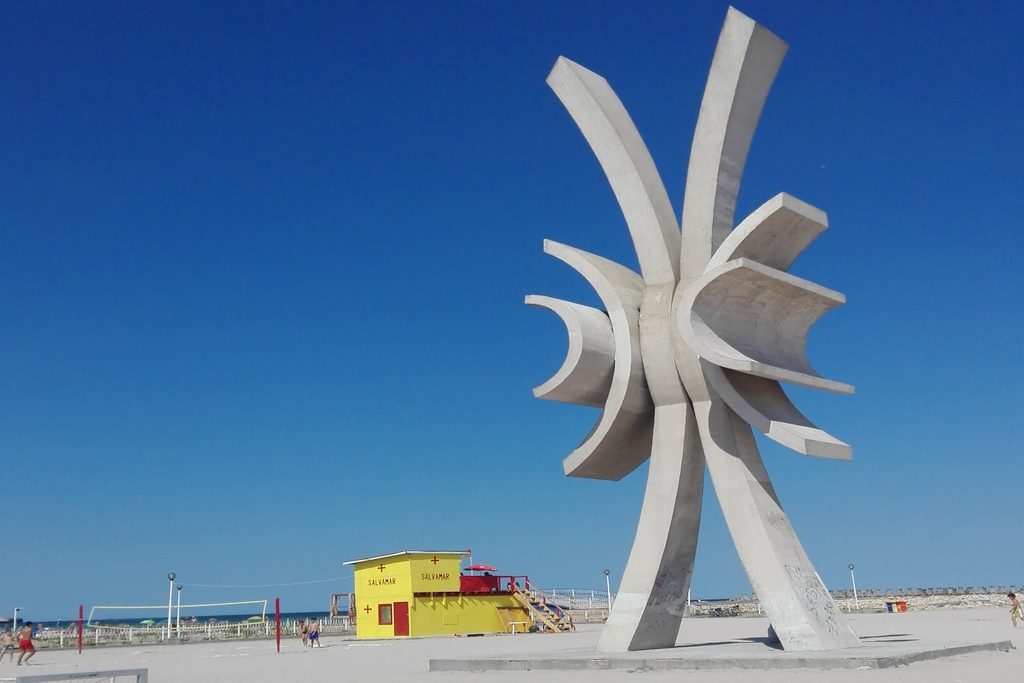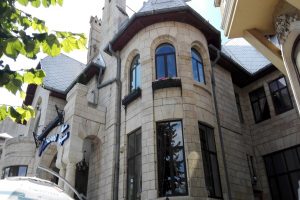

During the 1970s, on the central beach from Costineşti, was placed a monument today known worldwide as the Obelisk. Soon after, the Obelisk has become the symbol of the resort, turning into a meeting point for young people coming on holiday to Costineşti.
During 2005, after the floods, the monument was destroyed, being covered with earth and sand. Because the old building could not be repaired, the resort’s mayor ordered the erection of a new building, more robust and more impressive. A year later, before the start of the summer season, the symbol of Costineşti returned to the beach of the resort. The new obelisk in an improved form, will guard the area from a location closer to the center of the beach. The statue has a height of 18.5 meters, weighs 200 tonnes and consists of 6 parts suggesting the mast of a ship with its canvas in the wind.
For its designer, Wilhelm Demeter, the Obelisk is a child reborn. Even if he had not expected that the life of the old monument, erected during 1969, to be so short, he proudly received, although he was at a venerable age, the task of designing it again. The new Obelisk is “more stately and more beautiful”.
On the Obelisk Beach, during summer, often take place live concerts or interactive contests with prizes.
Costineşti has evolved from a small fishing village (1960) into a summer destination, popular among young people and especially for students. A hotel and a number of complexes with villas and bungalows were created during the communist era, these being different both in style and in comfort: the most luxurious (where the running water was being supplied permanently and the rooms were cleaned) were reserved for the elite of the communist union teens and pioneers, some also hosting foreign communists guests, that for a part of the seaside is named since then with the nickname “the Frenchmen’s Bay.” After 1989, some of them have been modernized but other new were also built, including villas, especially in the north side of the resort, under modern European standards.
The resort has a small lake inside the shoreline, Costineşti lake, which covers an area of 7 hectares, and low depth, being before the floods, separated from the sea by a cordon of sand. The lake is the only from the Romanian seaside which is not powered in the underground. Due to the high salinity level, there was formed a substantial layer of sludge, used for the treatment of rheumatic diseases.
The territory of Costineşti locality overlaps the ancient bakestone of a small Greek colony (emporion) called Parthenopolis.
During the Middle Ages, the locality was known as Stratoni, during the Byzantine period, then Mangeapunar during Turkish times, with a modest population of Greek fishermen (and later Lippovans) and Mocan and Tatar shepherds.
During the period 1840-1940, the village was populated by the so-called German Dobrudjan, having in their language the name of Büffelbrunnen (in Romanian; the buffalos fountain). The name “Costineşti” was taken from Emil Costinescu (landowner and politician during the late nineteenth century). During the 1960s it appears on the map under the name of “Dezrobirea“.

